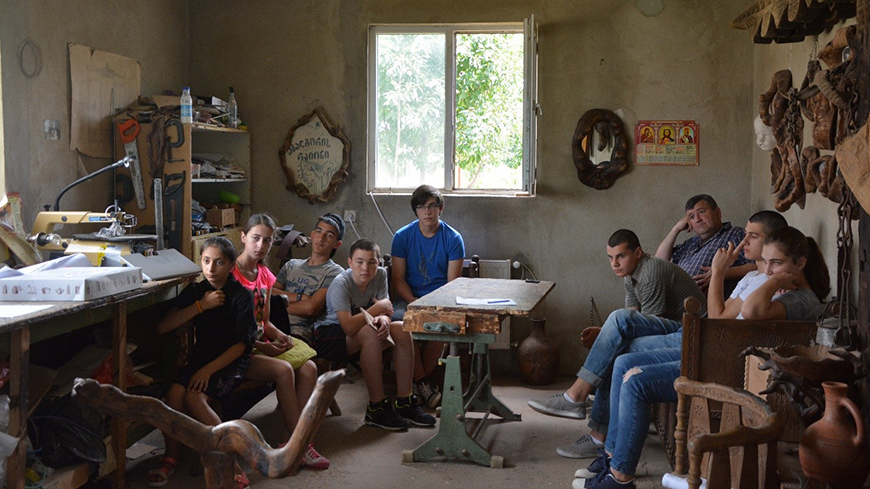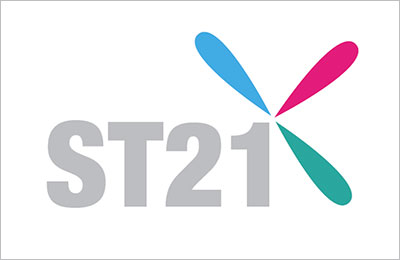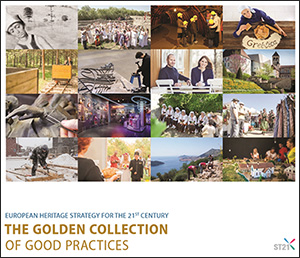Location of the initiative:

Initiator
NGO
Relation to Strategy 21 Recommendations:
K7 - ensure that the knowledge and skills involved in heritage trades are passed on
Time span of the initiative:
Start date: February 2012 / End date: end October 2016
Motivation / Methodology
The Crafts Initiative for Georgia aimed to support safeguarding of Crafts traditions as an important part of intangible cultural heritage, in particular to ensure the transmission of crafts making traditions to new generations through providing:
• Informal education opportunities in crafts for representatives of young generation, with the special focus on rural areas and endangered crafts fields
• Boosting professional development and the business skills among crafts makers
• Strengthening the networking and organisational base of the crafts sector in Georgia
• Improve image of crafts as well as raising awareness on local traditions and noted artisans.
Taking into account the condition of the crafts sector, which was characterised by the decline in all aspects, the working team elaborated the complex approach. Having the trainings and other educational events as a core of the action, the methodology also included a number of consistent measures addressing different directions and different stakeholders of Georgian crafts sector, which altogether made crafts trainings more efficient in terms of audience engagement and direct need drawn approach. The process involved two stages:
Preparatory stage:
- Research
Elaboration of study methodology and provision of the countrywide study of the Heritage Crafts sector to obtain detailed baseline information on legislative, institutional, economic aspects, also deeper analyses including demographic characteristics, industrial structure, market analyses, system of transmission of knowledge etc. (for more details please see http://goo.gl/HJinqD - Strategy document
Elaboration of development strategy and recommendations for Georgia regarding organisational structure, legal base, educational system, awareness raising and commercial development of the sector. The recommendations reflected the main obstacles for the transmission of the knowledge, engagement of the wider audience, especially youth, in the crafts sector.
Practical stage:
Practical steps to ensure the safeguarding and development of Georgian heritage crafts, which included measures within 4 main clusters:
- Creating opportunities for informal education.
In order to create Informal education opportunities in crafts for representatives of young generation the program launched small grants for local crafts producers to improve their working conditions with limited possibilities for transferring the knowledge to future generations. 21 granted workshops trained from 5 to 10 apprentices, total 150 youngsters (within the timeframe of the initiative, although the educational activities of most of the workshops continue today).
Training for Trainers - Due to the limitation of local human resources, the action incorporated active involvement of international experts to build the capacity of local trainers (35 trainers), which in turn provided expertise to up to 300 crafts makers in regions. The topics included craft product development, quality standards, presentation and packaging, participation in fairs and other marketing issues.
Boosting the business skills among crafts makers to support marketability of their products, seen as a way to ensure the livelihood of these traditions, the initiative lunched the series of Trainings and workshops by international and local Experts.
Publication of Craft Business Manual – Due to the limited number of publications available in local language, the initiative published a manual on how to run crafts business in Georgia. - Institutional development of Heritage Crafts sector. Taking into account the necessity of the systematic approach to the educational as well as other issues of the sector and the fact that Georgia was lacking any specialised entity dealing with the crafts, the initiative established Heritage Crafts Association. The Association as a membership organization with and an advocacy body, aimed to ensure updating and provision of different educational and other supportive measures in future.
- Advocacy and awareness raising campaign of Heritage Crafts. One of the important aspects to be addressed was the image of the crafts sector. Mostly perceived as an outdated, old fashioned, unprofitable, crafts were lacking any power of attraction for both state and the society, especially young generation. Therefore, to raise interest and ensure both retention of existing artisans and bringing the new talents to the industry, the initiative involved the number of actions to improve image of the Heritage Crafts on different levels. The measures include: trainings of local authorities, roundtable meetings with state and non-state actors; media campaign to raise awareness and ensuring visibility of Heritage Crafts and local masters, establishment of contest “Craftsman of an Years” and different contests encouraging the innovations and modernizing the designs of crafts products.
- Fostering economic potential of heritage crafts by development of local market. market development through establishment of Tbilisi International Summit of Crafts and Design “EthnoFest”, which at the same time represents the platform for the educational activities; supporting establishment of the net of museums shops, training modules in product development and business skills for crafts actors, creation of crafts business manual etc.
Obstacles / Barriers
The main difficulties connected with the implementation of the initiative were derive from three reasons: insufficient data, insufficient understanding of the value of crafts sector, long isolation of Georgian crafts sector from global developments.
Insufficient data
Even on the stage of the preparation of the initiative, it was clear that Crafts Sector is lacking any updated factual information. There were no statistical data on the number, location, demography, income etc. of crafts actors. And hence it was impossible to develop any methodology for the selection of the respondents and ensure the representative survey of the crafts actors. Furthermore, the databases provided by the local governments tend to be non-accurate and revealed the fact that mostly the state actors are not aware of the essence of crafts sector. Therefore, the working group has to conduct the impressive field work to reveal the crafts actors in different regions of Georgia and conduct the in-depth interviews and questioning of more than 500 artisans and experts.
Insufficient understanding of the value of crafts sector
Law understanding of the crafts sector and intangible heritage in general as a driver for economics and sustainable development, the crafts was mostly neglected on the state level. It was mainly addressed as “decoration” of other cultural events and therefore was not included in any educational, entrepreneurial or development programmes and schemes. This caused on one hand law quality tuition even in those rear vocational educational institutions, which offered craft specialisation and hence, low interest from the target audience, and on the other hand low development of the business entities in the sector which could provide employment and professional development opportunities. This situation made difficult for the initiative to involve state and non-state actors , other powerful stakeholder to unite the efforts for the sustainable changes, although the awareness raising company, as well as the face to face meetings and workshops with the representatives of local authorities and central government had a positive effect.
Isolation of Georgian crafts sector from global developments
The long isolation of crafts sector from the global developments caused the stagnation in understanding of crafts field in general. While on international level crafts is a wide area including design, craftsmanship, applied arts, in some countries even restoration and photography, in Georgia crafts was narrowed to Heritage Folk Crafts and tend to keep only the aesthetic formed sometime in the middle of 20th c. This attitude to the sector weakened its potential and, in most cases, excluded the possibility of bringing it up to date, which is so important for the development of audience and engagement of youth. In this regard initiative made strong efforts to re-evaluate the crafts sector and its essence, to widen its frames and raise awareness on it as a significant branch of creative industries.
Change / Impact
The Craft initiative launched in 2012 has achieved tangible results during these years of activities, namely:
- Crafts safeguarding Policy Integration into Governmental Policies. The particular component of the initiative addresses the problems at state level. Despite the fact that the Georgia has ratified (in 2008) The UNESCO Convention for Safeguarding of the Intangible Cultural Heritage (2003) under the obligation to safeguard the traditional craftsmanship (Article 2, e) and ensure its transmission from one generation to the next, the status and recognition of people and organizations in crafts sector was still very low. Therefore the initiative included several activities to target this problem such as Training in ICH inventorying with the representatives of Georgian National Agency for Cultural Heritage Preservation and the cultural departments of local municipalities led by International expert in ICH; Introduction of National Treasure Status for ICH transmitters – Georgia so far has no special law to regulate ICH safeguarding in the country. The idea to put more stress on the specificities of ICH in legal regulations was amongst the recommendations of the assessment studies carried out by GACC in 2012. As a result of consultations and meetings with state bodies the bid for the ICH law for Georgia has been developed and most importantly the idea of introducing the special status of “National Treasure” to the transmitters of ICH pushed forward by GACC, has been integrated in this proposal. At the moment the bid is being prepared by the Georgian National Agency for Cultural Heritage Preservation is negotiated amongst different state parties.
- Establishment of “Craftsman of a Year” has been launched in 2015. The idea of the contest was to divert public attention to crafts makers and more importantly to those with special dedicated service in transmitting Crafts traditions to future Generations. The prize given to Best Teachers – Transmitters of Crafts Traditions has been launched and awarded in cooperation with Georgian National Agency for Cultural Heritage Preservation.
- Inclusion of the crafts industries in the state programmes as well as other international donors’ funding schemes which crates feasible opportunities of the development of the educational and entrepreneurial activities in the crafts sector
- Initiation of the British Council’s programme Crafting Future for Georgia which is focused on the development and improvement of the vocational training in crafts sector
- Development by GACC of the Platform of Crafts Informal Educational Platform, which was co-funded by USAID Economic security programme and is in the process of implementation
- Development of the local market which is reflected not only in the sustainability of the Tbilisi International Summit “EthnoFest”, but also with the opening of dedicated open-air marketplaces for crafts producers by Tbilisi municipality and raised interest of local businesses in crafts merchandizing.
- Visible incensement of the young producers in the sector
- Incensement of the number of crafts based small enterprises and workshops.
- Clear changes of the perception of the crafts industry by society.
Lessons learned
The main lesson learned during the implementation of the initiative was that the sustainable results and sustainable changes need consistent approach at least 6-7 years. At the same time the intervention should address the different aspects of the sector, which empower each other and contribute the substantial changes.
Another important aspect is the collaboration of different stakeholders. Unification of the efforts of civil society, state actors and international donor organizations, make possible to address the diverse needs of the sector and bring the changes on different levels. At the same time involvement of the expertise both local and international from other fields like business, public relations etc. brings the crafts sector on different level and contributes its better integration in local economy and linkages with other field of creative industries.
Online resources
https://www.facebook.com/GACC.gaccgeorgia.org
Contact information
Contact person: Mariam (Maka) Dvalishvili
Organisation: Georgian Arts and Culture Center
Email: [email protected]
Phone: +995 322931335
Website: Gaccgeorgia.org
Source of financing
Public





